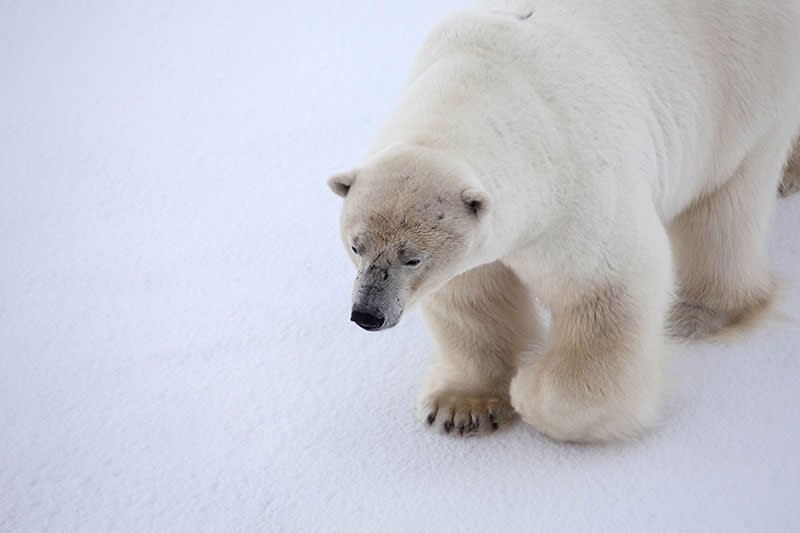We’re excitedly tracking our adopted polar bear – a mother bear currently known as # X37136 – and her cub on the Polar Bears International (PBI) Bear Tracker page, to see what they’ve been up to. And we will soon have a proper name for her, one befitting her natural beauty, from the hundreds of name submissions we’ve received from the #NameTheQuarkBear contest. It’s not too late to submit a name, but hurry, the contest ends August 31.

Photo Credit: Samantha Crimmin, 2015.
This mom and cub have racked up a total of 1,793 miles (2,885 kms) this year, the majority of which was in and around the Belcher Island region. This family knows what it likes and doesn’t bother to explore too far to find food. Whether they will move back down to their starting point of Akimiski Island or come onshore somewhere in Quebec remains to be seen. One thing is for sure: they’ll keep eating as long as they can before making any choices!
During the ice-free season while they wait for sea ice to return, polar bears spend three to four months on land, fasting. When on land and away from their primary food source, they rely on the energy from their body fat accumulated over the winter. While they can snack on eggs, berries, kelp and sometimes caribou, these foods do not contain the same amount of calories as the nutrition they find at sea. While on land, polar bears slow down to save as much of their energy as possible.

Photo credit: Samantha Crimmin, 2015.
They will lose weight slowly and steadily until next winter, so it’s important that the return of fall sea ice not be delayed, as it is becoming more common for bears without as many fat reserves to not make it until winter. Ultimately, as climate change continues to threaten arctic sea ice, the end goal for all bears will be for their calorie intake to exceed their calorie output.
More information on the plight of polar bears, and how to help them, can be found at Polar Bears International.









